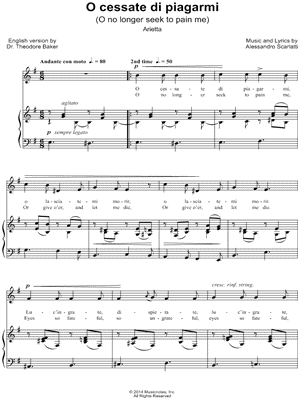

His best operas of this period are La Rosaura (1690, printed by the Gesellschaft für Musikforschung), and Pirro e Demetrio (1694), in which occur the arias "Le Violette", and "Ben ti sta, traditor".įrom about 1697 onwards ( La caduta del Decemviri), influenced partly perhaps by the style of Giovanni Bononcini and probably more by the taste of the viceregal court, his opera arias become more conventional and commonplace in rhythm, while his scoring is hasty and crude, yet not without brilliance ( L'Eraclea, 1700), the oboes and trumpets being frequently used, and the violins often playing in unison. By 1686, he had definitely established the "Italian overture" form (second edition of Dal male il bene), and had abandoned the ground bass and the binary form air in two stanzas in favour of the ternary form or da capo type of air. His early operas- Gli equivoci nel sembiante 1679 L'honestà negli amori 1680, containing the famous aria "Già il sole dal Gange" Il Pompeo 1683, containing the well-known airs "O cessate di piagarmi" and "Toglietemi la vita ancor," and others down to about 1685-retain the older cadences in their recitatives, and a considerable variety of neatly constructed forms in their charming little arias, accompanied sometimes by the string quartet, treated with careful elaboration, sometimes with the continuo alone. Scarlatti's style, however, is more than a transitional element in Western music like most of his Naples colleagues he shows an almost modern understanding of the psychology of modulation and also frequently makes use of the ever-changing phrase lengths so typical of the Napoli school. Scarlatti's music forms an important link between the early Baroque Italian vocal styles of the 17th century, with their centers in Florence, Venice and Rome, and the classical school of the 18th century. He died in Naples in 1725 and is entombed there at the church of Santa Maria di Montesanto. His last work on a large scale appears to have been the unfinished Erminia serenata for the marriage of the prince of Stigliano in 1723. By this time Naples seems to have become tired of his music the Romans, however, appreciated it better, and it was at the Teatro Capranica in Rome that he produced some of his finest operas ( Telemaco, 1718 Marco Attilio Regolò, 1719 La Griselda, 1721), as well as some noble specimens of church music, including a Messa di Santa Cecilia for chorus and orchestra, composed in honor of Saint Cecilia for Cardinal Francesco Acquaviva in 1721. In the interval he enjoyed the patronage of Ferdinando de' Medici, for whose private theatre near Florence he composed operas, and of Cardinal Ottoboni, who made him his maestro di cappella, and procured him a similar post at the Basilica di Santa Maria Maggiore in Rome in 1703.Īfter visiting Venice and Urbino in 1707, Scarlatti took up his duties in Naples again in 1708, and remained there until 1717. In 1702 Scarlatti left Naples and did not return until the Spanish domination had been superseded by that of the Austrians.
#What is o cessate di piagarmi about series#
Here he produced a long series of operas, remarkable chiefly for their fluency and expressiveness, as well as other music for state occasions.

In February 1684 he became maestro di cappella to the viceroy of Naples, perhaps through the influence of his sister, an opera singer, who might have been the mistress of an influential Neapolitan noble.

The production at Rome of his opera Gli equivoci nel sembiante (1679) gained him the support of Queen Christina of Sweden (who at the time was living in Rome), and he became her maestro di cappella. He is generally said to have been a pupil of Giacomo Carissimi in Rome, and some theorize that he had some connection with northern Italy because his early works seem to show the influence of Stradella and Legrenzi. Scarlatti was born in Palermo (or in Trapani ), then part of the Kingdom of Sicily.


 0 kommentar(er)
0 kommentar(er)
